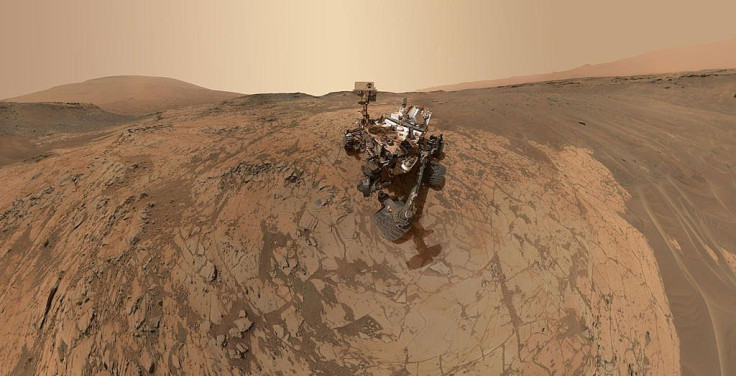UFO Enthusiast Claims Ancient Egyptians Were From Mars

A UFO enthusiast claimed that a photo provides evidence that Martians exist -- and that the ancient Egyptians of long ago were from Mars.
Self-titled UFO expert Scott C. Waring claimed that an old photo taken by NASA’s Mars rover shows carvings resembling the ones found in ancient Egypt, Express reported. This led Waring to speculate several things, all of which can be summarized in one thought: Ancient Egyptians could be from Mars.
In a blog entry, Waring explained that the photo shows not just one but several “Egyptian-style” carvings. Most of them featured elongated heads resembling ancient Egyptian headwear. Waring said these “carvings” appear similar to how Egyptian carvings look like: protruding from a wall.
Aside from emphasizing the elongated “statue” heads, Waring also pointed out how most of these “carvings” appear “unfinished.” He also pointed out that some “carvings” appear out of place: like a huge slab of rock that looks smooth, another “unfinished carving” that also appears smooth, and one that looks like a piece of “technology.”
These “carvings,” Waring claims, could explain why the “amazing pyramids are built way out in the middle of nowhere.” He said the Mars people could have traveled to Earth when Mars was “destroyed” and settled on the place we know as Egypt.
Now why would they settle in Egypt? Waring said this is “because Egypt is very similar in appearance and weather to that of Mars.”
“No other place on Earth looks as much like Mars,” the UFO enthusiast claimed.
Official reports
Despite Waring’s enthusiastic claims, however, NASA itself said the photos do not show anything except a 39ft-tall cliff found at the rim of the Victoria Crater.
NASA said the photo, along with others, simply showed that Victoria Crater “once represented a dune field.” It’s just another plot of land characterized by loose sand “not unlike the Sahara desert on Earth.”
Mind trick?
Mr. Waring’s enthusiasm over this “finding” can simply be explained by a psychological mind trick NASA calls “pareidolia.” NASA said those who experience this can recognize all sorts of shapes in clouds, rock formations and other unrelated objects.

© Copyright IBTimes 2025. All rights reserved.





















